Infectious diseases and the BICOM method
Rudolf Haußmann, Naturopath, Weil am Rhein, Germany
Introduction
We come across a great many infectious diseases in our practices. Particularly so because many so-called “banal” infections are often not properly treated in GP surgeries because the costs are no longer fully reimbursed by the health insurance companies.
Rhinitis often has to be diagnosed as sinusitis, bronchitis or a similar condition just to qualify for insurance funding.
The consequence of this – and this not only applies in my practice – is that an increasing number of these patients, who in some cases have been coming to us for several years with other conditions, are now
coming to naturopathic practices for suitable treatment. This often occurs in the knowledge that serious complications may develop from “banal” infections if left untreated or not treated properly.
The idea of “containing costs” doesn’t apply here, since treating these complications is generally more expensive than the original infection, which is relatively easy to treat with conventional medicine, often based on herbal remedies.
Bioresonance therapy to treat infectious diseases?
For a number of years I have been working with devices to apply bioresonance therapy and for around 3 years now with the BICOM® device, which in many respects gives rise to the hope that all sorts of indications can be effectively treated without the use of medication.
Ca. 300 device settings provide effective assistance for some 400 indications with the aid of bioresonance therapy. To gain an overview of this method, it is worth taking a look in the therapy manual, which provides some very useful information. Nevertheless it is not necessarily the treatment of infections that immediately catches your attention.
But sometimes we are helped by chance. On one rather unpleasant day I was hit by a heavy cold, as had happened a number of times before, and this made my nose itch, generated mucous and tears and made my work almost impossible.
Given that I had a relatively large number of patients to treat at the time, I saw no urgent need to increase the numbers of people coming to my practice by passing on the infection to my patients. So I had to/wanted to rid myself of my symptoms asquickly as possible, but had nothing suitable to hand in my medicine cabinet.
When we treat ourselves, of course, it goes without saying that we try to find a cure quickly and at no cost if at all possible.
Not because I was particularly looking for it, but rather because I came across it quite by chance, I turned to BICOM® therapy:
Device setting
Prog. 500
IC: Saliva, tears
Input: Roll applicator in nasal and eye socket area
Output: Modulation mat
Therapy time: 5 minutes
My expectations: modest!
The following day after a fairly reasonable night, surgery started punctually at 8.30 am.
At around 11.00 am it occurred to me that I had had a cold a few days before and had felt really ill. I no longer noticed any symptoms.
Since then I can and want to recommend this method to others, but without a cast iron guarantee. It may not help in every case.
For me, though, it gave encouragement to treat other infections with bioresonance therapy, and to convince my patients of its efficacy.
Two alternative methods emerged as a result:
1. Respiratory tract disorders/acute infections using the body’s own substances
2. Chronic infections using nosodes
Version 1: Body’s own substances
The case history frequently starts with the here and now. When and where did the initial symptoms appear? How has the disease progressed? Fever/raised temperature, localisation of symptoms/ headaches/joint aches?
I always test on the basis of the EAV procedure on the lymph (Ly), lungs (Lu), colon (LI) , allergy (All), organ degeneration (OD), triple warmer (TW), heart (He) and small intestine (SI) points. It is normally sufficient to test on one hand. The program testing starts on the point with the highest priority and, if successful, continues on other points.
If for a device setting ca. 3 – 4 previously pathological readings return to the normal range, the patient is treated accordingly. Further testing may be required during follow-up treatments.
My therapy approach always includes a prior conductance test and the basic therapy derived from this.
I would ask you to consult the manual for the programs to be applied. Further valuable information can be found in “BICOM Bioresonance Method” Number One, Special Edition for BICOM® Therapists,
2006, page 30/31.
CASE STUDEIS
Case 1: Female patient I.T.,66 years old
12.03. – 23.04.2007
Sinusitis, bronchitis
To begin with, 9 days of treatment with antibiotics – unsuccessful.
29.03.07 BICOM® therapy started:
Basic therapy, 500, 514, 240
Away then due to work commitments, so
next treatment not until 23.04.2007, same program sequence.
Since then, free from symptoms without recurrences (which had frequently been the case in the past.)
Case 2: Male patient, J.G.N., 54 years old
07.04. 2007 – 09.06.2007
Recurring Rhinitis, recurring sinusitis, otitis media (inflammation of the middle ear), both sides.
Patient had been treated by me on numerous occasions for other symptoms, so consultation in my practice in this case too. No prior treatment with antibiotics (these had been refused by the patient.)
07.04.2007 BICOM® therapy started:
Basic therapy, 514, 290, 570, 961
Placing of applicators according to therapy manual, except 290:
I: Goldfinger ear canal
O: Modulation mat
Programs were tested using EAV.
After a total of 5 treatments, patient displayed no further symptoms. Nor did this type of infection recur at a later date.
Case 3: Male patient, M.G., 24 years old
March 2007 serious case of salmonella infection which caused the student to halt his studies. Up to November 2007 treated by GP, stool tests normal, however persistent symptoms with frequent, watery stools.
Discharged by the GP with Imodium (to take as required).
Patient arrived at my practice in January 2008. During a telephone conversation with the GP, who I knew personally, he confirmed that the stool examinations were free from infection, with a diagnosis of irritable bowel suspected.
a) Basic therapy
b) Treatment following BICOM® testing
441 IC: St. 997 therapy time 10 mins., IC: Salmonella nosode D6 (This method is adapted in part from Dr. Rummel.)
A total of 12 treatments at intervals of around 8 days. After the third treatment the patient was able to resume his physics studies and is currently working towards a doctorate. There are only residual symptoms, after eating spicy food. Treatments only given sporadically on request.
Case 4: Female patient N.T., 23 years old
January 2008 Pfeiffer’s glandular fever treated with conventional medicine by the GP, confirming that symptoms and lab. tests were now normal (as of end of October 2008.) However, bladder infections recurring every 4 weeks on average with flu-like infection which resulted in relatively frequent periods where the patient was unable to work.
a) Basic therapy
b) Treatment following BICOM® testing
570 increase powers of resistance
970 toxin elimination
430 liver detoxification
For these programs IC: Saliva
997 therapy time 10 mins.,
IC: Nosode Epstein-Barr virus D6
Ca. 12 treatments, initially at weekly intervals, then twice-weekly. No further infections since February 2009.
